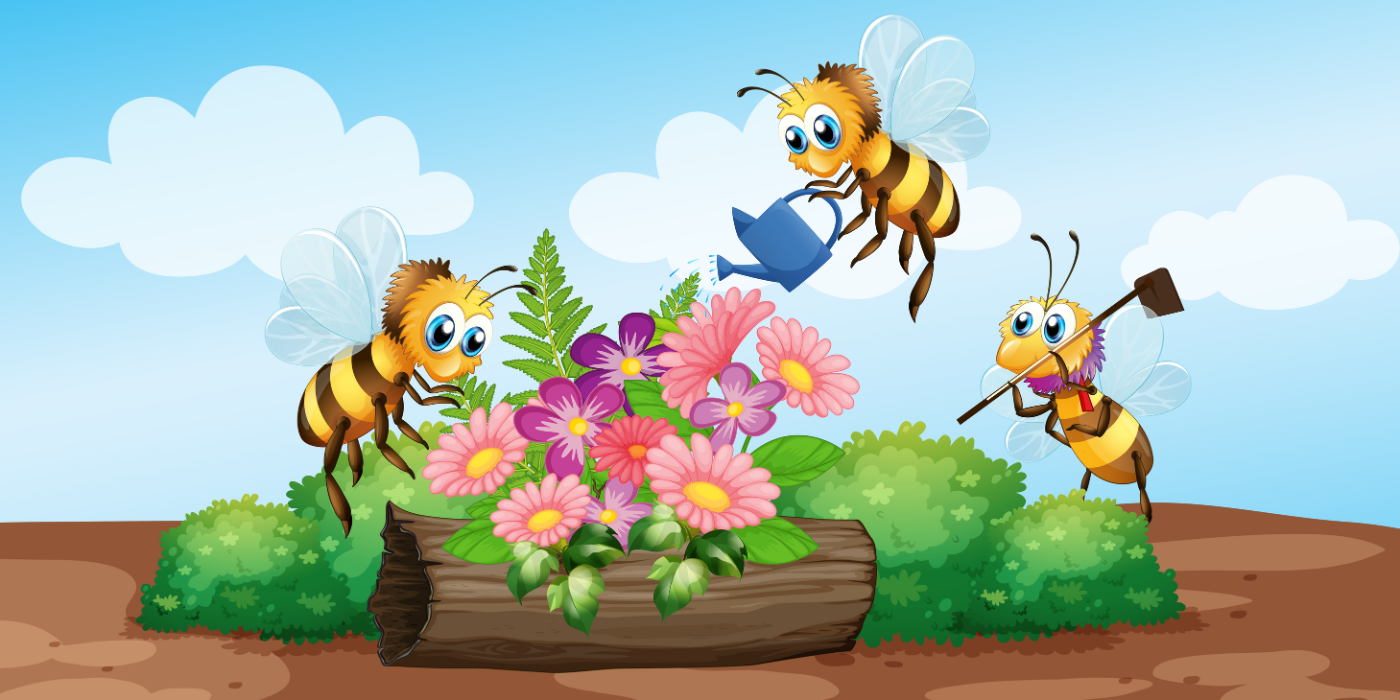
Bee-Friendly Garden
In the colorful world of gardening, there's a tiny, yet essential creature that deserves our love and attention: the bee. These little pollinators play a vital role in our ecosystem, and by creating a bee-friendly garden, you can be part of the solution while having a blast. So, put on your gardening gloves, grab your sunhat, and let's dive into the vibrant, buzzing world of bee-friendly gardening!
Why Should You Care About Bees?
Before we dig into the dirt, let's talk about why bees are so important. You see, bees aren't just buzzing around for the fun of it. They are nature's gardeners, helping plants reproduce by spreading pollen. Without bees, many of the fruits, vegetables, and flowers we love would be in trouble. So, if you enjoy biting into a juicy apple or marveling at a bed of roses, it's time to give back to these little heroes.
Bee-Friendly Blooms: Planting the Seeds of Love
To create a bee-friendly garden, you'll want to focus on the stars of the show: the flowers. Bees are attracted to a variety of blossoms, so the more colorful and diverse, the better. Here's a selection of bee-friendly blooms that will get your garden buzzing with excitement:
- Lavender: These fragrant, purple blooms are a bee's paradise. Not only do they attract bees, but they also have a calming effect on us.
- Sunflowers: Their bright, sunny faces aren't just pleasing to our eyes; they're a bee's jackpot.
- Cosmos: These daisy-like flowers are a breeze to grow and a bee magnet.
- Borage: The blue, star-shaped blossoms are not only bee magnets but are also edible. Toss them in a salad for a bee-approved meal!
- Coneflowers: These lovely daisies come in various shades and are perfect for bees and butterflies.
Buzz Off, Pesticides!
Now that you've planted your bee-friendly flowers, let's talk about the "buzzkill" of bee-friendly gardening: pesticides. Bees are super sensitive to chemicals, and pesticides can be harmful to them. Instead, opt for natural pest control methods or explore bee-safe alternatives to protect your garden without harming your pollinator pals.
Beehouses
While you're tending to your bee-friendly garden, why not consider installing a beehouse? These trendy accommodations for solitary bees are like the coolest boutique hotels for our buzzing buddies. Mason bees, leafcutter bees, and other solitary species are excellent pollinators and love to nest in these tiny, cozy homes. You'll be providing shelter and helping boost local bee populations – talk about a win-win!
Bee-Friendly Fun for the Whole Family
Gardening doesn't have to be a solitary pursuit; it can be a fantastic family activity. Get the kids involved in planting bee-friendly flowers and teach them about the importance of bees in our ecosystem. You can even turn it into a game by keeping a "bee spotting" chart to see how many different species visit your garden. It's educational and fun!
Bee-utiful Rewards
One of the best parts of bee-friendly gardening is reaping the rewards. As your garden blooms and thrives, you'll notice an increase in the number of bees and other pollinators visiting. Your plants will produce more fruits and vegetables, and your garden will be bursting with color and life. Plus, you'll feel the satisfaction of knowing you're doing your part to help these incredible creatures.
Bee-Lieve in the Future
As you tend to your bee-friendly garden, you'll be contributing to a more sustainable and bee-friendly future. Bees need our support now more than ever, and by creating a welcoming habitat for them, you're making a real difference. So, whether you're an experienced gardener or just starting out, join the bee-friendly gardening movement and make your outdoor space a sanctuary for these hardworking pollinators.
In conclusion, bee-friendly gardening is not only a responsible choice, but it's also a delightful adventure in which you can make a significant impact on your local ecosystem. With a colorful array of bee-friendly blooms, pesticide-free practices, and the possibility of hosting your own bee boutique, your garden will be buzzing with life and laughter. So, why wait? Grab your gardening tools, get your hands dirty, and let's create a bee-friendly garden that's as sweet as honey!
General Question About Bee Friendly Garden
What are some bee-friendly flowers that bloom throughout the year?
To ensure bees have food throughout the year, plant a variety of flowers that bloom in different seasons. Early bloomers like crocuses and snowdrops, mid-season flowers like lavender and sunflowers, and late bloomers like asters and goldenrod are excellent choices.
How can I create a water source for bees in my garden?
Provide a shallow water source, such as a birdbath with stones or marbles for bees to land on. This allows bees to drink without drowning. Change the water regularly to keep it clean and fresh.
Are there specific herbs that are particularly attractive to bees?
Yes, herbs like thyme, sage, rosemary, lavender, and mint are highly attractive to bees. Planting these herbs not only benefits the bees but also provides fresh herbs for your kitchen.
What natural pest control methods can I use to protect my bee-friendly garden?
Use natural pest control methods like neem oil, insecticidal soap, and introducing beneficial insects like ladybugs and predatory beetles. Avoid synthetic pesticides, which can harm bees and other pollinators.
How can I make my garden more attractive to solitary bees?
Install bee houses to provide nesting sites for solitary bees like mason bees and leafcutter bees. Plant a variety of flowers with different shapes and colors to cater to their diverse preferences, and ensure there is bare soil or sand patches for ground-nesting species.



Leave a comment